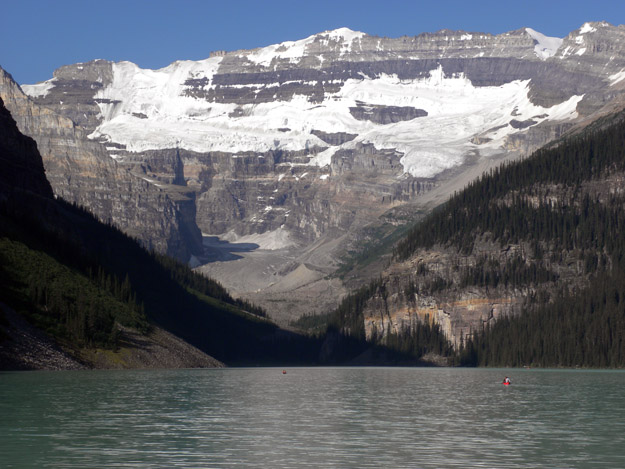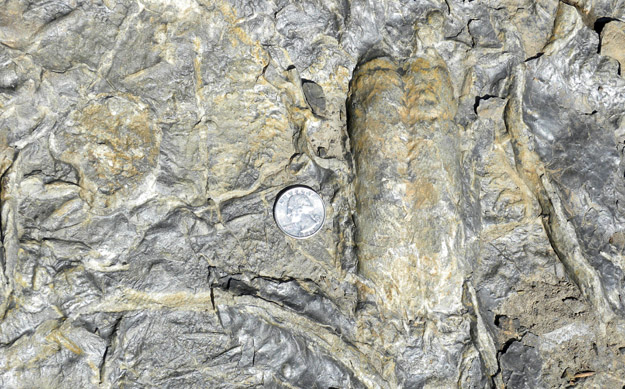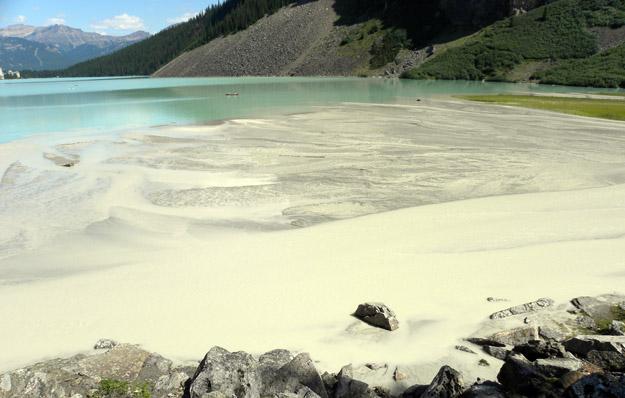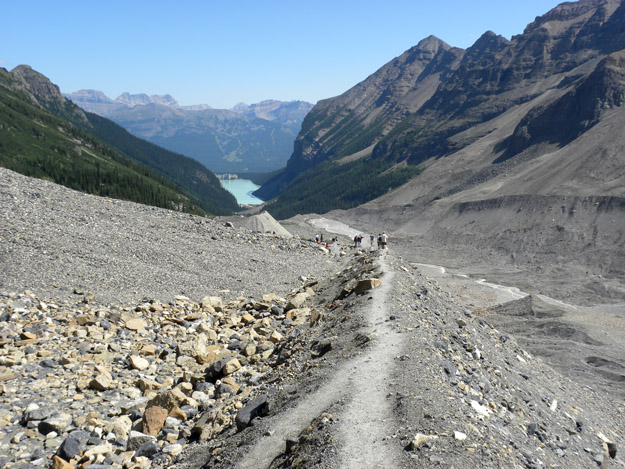LAKE LOUISE, ALBERTA–On our free day the IPREP study group (this apparently means “International Paleontological Research Exchange Program”) drove to the spectacular Lake Louise in Banff National Park for a hike up the valley to the “Plain of Six Glaciers”. It was one of those many places where I know just how fortunate I am to be a geologist. The weather could not have been better, and there was even a tea house near the end of the trail for sandwiches, peachade, and perfect chocolate cake!

Lake Louise as seen from its outlet looking up the valley. Our hiking trail proceeded from here along the right side of the lake and up the valley almost to the ice of the hanging glaciers.

We could not help but be delightfully distracted by these brilliant trace fossils in the rocks along the lake shore. The bilobed structure which looks like a deer footprint is an excavation made by a trilobite -- the trace fossil itself is called Rusophycus. The sinuous tubes are trails made by burrowing worms. These features protrude form the rock surface because they are actually on the bottom of the bed. Sediment filled the original holes and is now preserved as ... wait for it ... convex hyporeliefs. You knew we had a name for it! (Middle Cambrian, Gog Formation).

The water of Lake Louise has a pastel emerald color because it is loaded with very fine sediment called "glacial flour". It is produced by glacial ice finely grinding the rocks in the highlands above. This sediment fills the streams to near capacity and makes an extensive delta at the inlet to the lake.





I’m loving this blog! Great adventures with great geology — keep it up!
Thank you very much, Callan! And keep up your excellent blog work as well. You’re a veteran at this!
Hi There… fabulous photos! Glad you had such great weather and were able to explore up towards the teahouse!
One thing… Lake Louise and Banff National Park are in Alberta! It’s a common mistake to be honest.
Thanks for the correction, which I just made. I’m a better geologist than geographer!
Plain of Six Glaciers, even if not all six are readily apparent…but I think we have counted six in the past…
Thanks, Matt! Correction made.
Pingback: Wooster Geologists » Blog Archive » Wooster’s Fossil of the Week: a trilobite burrow (Upper Ordovician of Ohio)